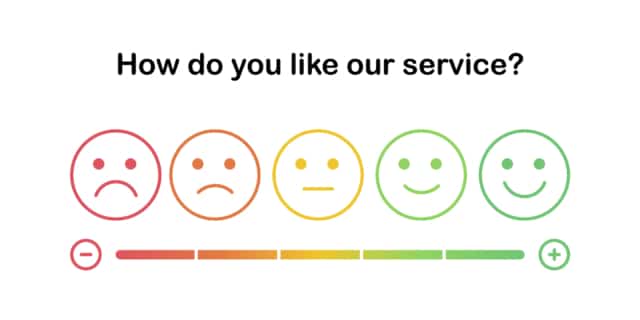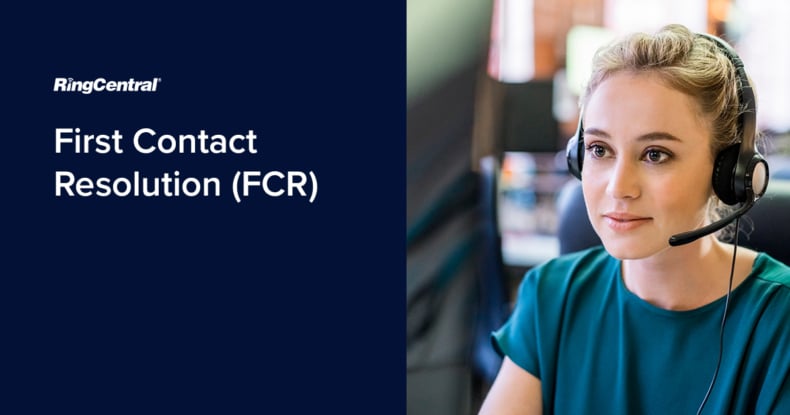In this article, we'll cover:
If you’ve ever run a business, you’ll already understand the importance of customer satisfaction. If you can’t keep your customers happy, chances are they’ll take their custom elsewhere – which, unless you do something about it as a matter of urgency, means you probably won’t have a business for long.
For call and contact centres, providing a professional, quick, friendly, and efficient service is vital. Ask any consumer, and they’ll soon tell you how much they dread dealing with call centres. The frustrations are potentially limitless, so making the customer experience as painless as possible is essential.
This means addressing customer queries comprehensively with the minimum of delay. The last thing customers want is to waste time on multiple calls to get whatever issue they have resolved. They have better things to do with their time.
Call and contact centre managers understand this well. That’s why they put so much emphasis on first contact resolution (or first call resolution, aka FCR). This important metric measures how efficient teams are when it comes to resolving customer problems. The higher the FCR rate, the more calls are being dealt with the first time and the more efficient the team is.
We’ll discuss FCR in more detail here, including providing a more in-depth definition of what it is and some examples of it in action. We’ll also explain why it matters so much and how to improve your own call centre’s first contact resolution rate. Then we’ll conclude with a quick discussion of how RingCentral’s cloud contact centre can help deliver higher FCR.

Definition of First Call Resolution
The term ‘first call resolution’ is fairly self-explanatory: as we’ve just noted, it refers to the percentage of customer calls that are resolved the first time, without the need for further follow-up or a callback. This is an important benchmark for call centres, as it gives them a good idea of how their customer support team is performing.
Evidently, customers don’t want to be left hanging around on the phone for hours or – worse – made to endure repeat calls to get a simple issue resolved. Ensuring that queries and complaints are dealt with swiftly, efficiently, and, of course, politely is important to maintaining a positive customer relationship. Customers who know they can rely on good service, with a few pain points as possible, are likely to come back.
However, a low FCR rate indicates that many issues aren’t being resolved during the first interaction, forcing customers into time-consuming repeat calls. If a customer’s issue can’t be addressed initially, it’s likely to become a major bugbear for them – and there’s an increased risk they’ll take their custom to someone else.
By contrast, a high FCR rate indicates a customer support team is doing well in resolving problems without the need for a further follow-up phone call. This is likely to result in higher levels of customer satisfaction and foster enduring long-term loyalties.
FCR isn’t the only metric call, and contact centres use it to measure their performance for benchmarking purposes. There are various other KPIs, too. These include average handle time (AHT) and talk time. Nevertheless, FCR is one of the most important yardsticks as it provides a clear measurement of efficiency and directness in addressing customer queries and problems.

Why Does First Call Resolution Matter to Customer Service Teams?
In the age of social media and customer reviews, keeping consumers satisfied has never been more important. Customers today make all manner of queries – sometimes complex – via various sources, including live chat, social media, phone calls (including interactive voice recognition or IVR), and email.
Contact centres must be alert to these changes in consumer habits because they’ve also generated consumer expectations changes. Customers today expect to reach brands through multiple channels, and if they find they’re unable to get issues resolved via one or more of these, they’re not going to be happy.
By contrast, high rates of first contact resolution are likely to keep customers returning. Anyone who’s run their own business will know that customer loyalty can be the difference between success and failure. If your first call resolution rate is high, this should indicate that customers are receiving a good and efficient service.
Besides, a high first contact resolution rate should translate into improvements in other important metrics. These include customer satisfaction or CSAT scores. Satisfied customers are likely to spread the word about the good service they received, meaning increased referrals and growth via word of mouth.
Another advantage of high FCR is that it helps reduce contact centre costs. Winning over new customers is typically much more expensive than hanging on to existing ones. If you can turn first-time customers into regular repeat customers (and keep them that way through good customer service), you could save your business a lot of money.

How to Measure First Call Resolution
Driving up first call resolution rates is, obviously, much easier said than done. Whenever a business introduces a focus on FCR for the first time, there’ll likely be some room for improvement at first. So, how can you go about making the requisite improvements? Firstly, you need to understand how to measure FCR.
There are different definitions of FCR and different ways of collecting data. Some CRM systems may only note a single number for each customer – which means that if they were to call again from work or on their mobile, the call might not be registered among your repeat contacts, potentially producing an erroneous FCR record.
Reliable reporting is a prerequisite for improving FCR rates. One way of ensuring more accurate reporting of first call resolution is to task agents with the responsibility. They may conclude customer contacts simply by asking whether the issue has been resolved and then, assuming they receive an affirmative response, mark the ticket accordingly.
However, agents should be subject to regular and thorough auditing to ensure their reporting is accurate. Otherwise, the FCR rate being reported may be much higher than it is in reality.
You should also ensure that you know what your customer base is looking for, the better to address its needs and boost FCR. Delve into your customer data to get a better understanding of demographics, needs and preferences. Create customer profiles divided into different groups and demographics; this should help enhance your understanding.
Best Practices for First Call Resolution
You can adopt numerous best practices to help boost your FCR rate, and we only have space to discuss some of them here. Suffice it to say that many of the most effective best practices are fairly self-explanatory. In implementing these measures, you should see noticeable improvements in customer satisfaction and customer contacts.
Firstly, ensure you take a strategic approach to call resolution. Make sure you have identified clear KPIs and that your agents know how to prioritise them.
AHT shouldn’t take precedence over the quality of each customer contact: the objective is to get the issues at stake resolved, not to bounce customers out of the door as quickly as possible. This can lead to further problems down the line while also antagonising customers.
Agents must have access to the tools they need to handle customer queries as efficiently and completely as possible. It’s worth investing in tools that collect finely detailed customer data, as this could provide you with invaluable insights that you can use to improve resolution rates further.

Your policies must be clear to your agents. You could have the most talented and accomplished team in customer service, but if they’re unclear about your policies, this risks confusion for them and your customers. Thus, agents must be provided with the guidance, backing, and autonomy they need to conclude queries effectively by themselves: it’s important to empower them.
Finally, customers must be subjected to as little strain and effort as possible. In contacting your team, they’ve already gone into considerable trouble. The objective after that point must be for agents to do the legwork and put in the hard yards to resolve the issue at hand.
How to Improve First Call Resolution
If your FCR rate isn’t where you feel it ought to be, it’s time to look again at agent training. It may be that there is room for improvement here and that your agents can be better equipped to handle customer queries – especially complex ones – through training.
In particular, your agents must have an in-depth knowledge of your products and services, so they’re in a better position to understand whatever issues might arise. The importance of FCR should also be emphasised in agent training.
Agents should be encouraged to keep abreast of relevant issues, for example, through company white papers and webinars. This will help them develop their own knowledge base – an important resource that they can draw on when addressing customers’ problems – and raise the overall standard of knowledge throughout your team.
It would be best if you also placed great emphasis on response times. Your customers are, no doubt, busy people. Even if they aren’t, there are plenty of other things they’d rather be doing than waiting for someone to take their call. Quicker response times mean a better customer experience and higher customer satisfaction; this is the ultimate objective of high FCR.
How RingCentral’s Cloud Contact Centre Can Boost Your First Call Resolution Rate
RingCentral’s cloud contact centre can help your business provide attentive, swift, and helpful support to its customers. It uses skills-based routing to ensure that customers are connected to the right agents every time, helping to solve their problems quicker.
It also optimises agent schedules, so there’s minimal downtime, saving customers the hassle of long waiting periods. Its omnichannel flexibility allows agents to deal with customers’ queries on the channel that best suits the latter. Also, it enables you to add self-service options through automated IVR, empowering customers to find their own resolution.
First call resolution isn’t the only measure of satisfaction, but it can help your business keep customers happy. It can enable you to understand better your customer base and what it’s looking for. The potential benefits of FCR are, therefore, mutual, ensuring both happier customers and healthier businesses.
Originally published Mar 17, 2021, updated May 20, 2021

